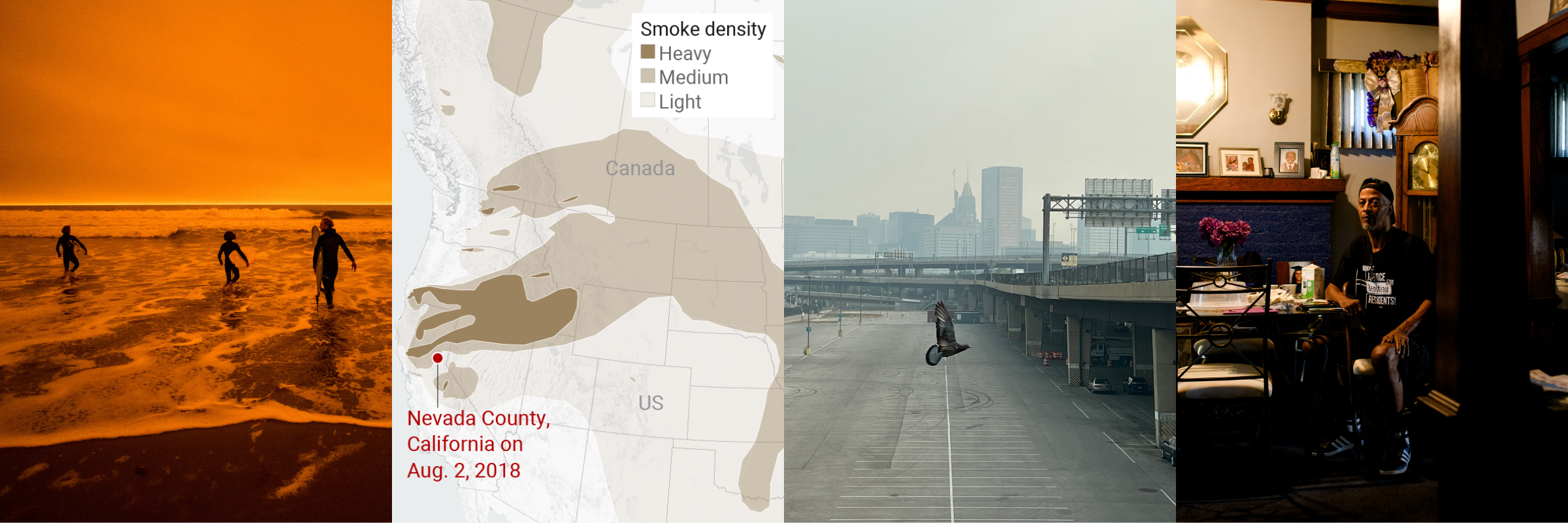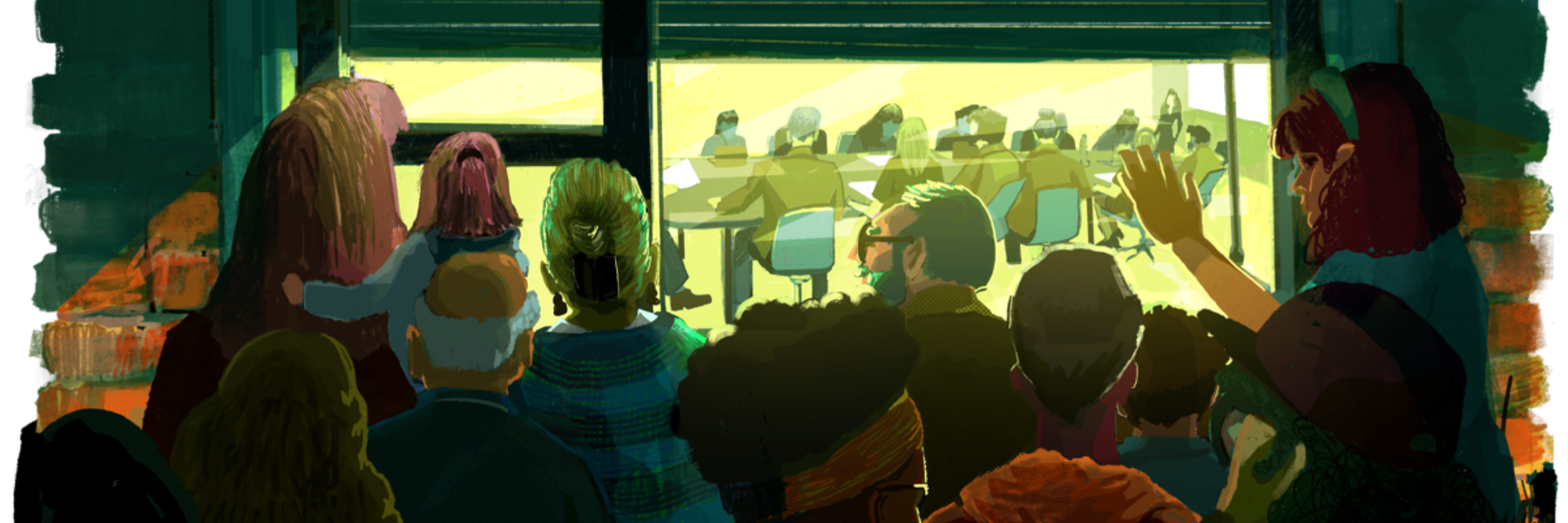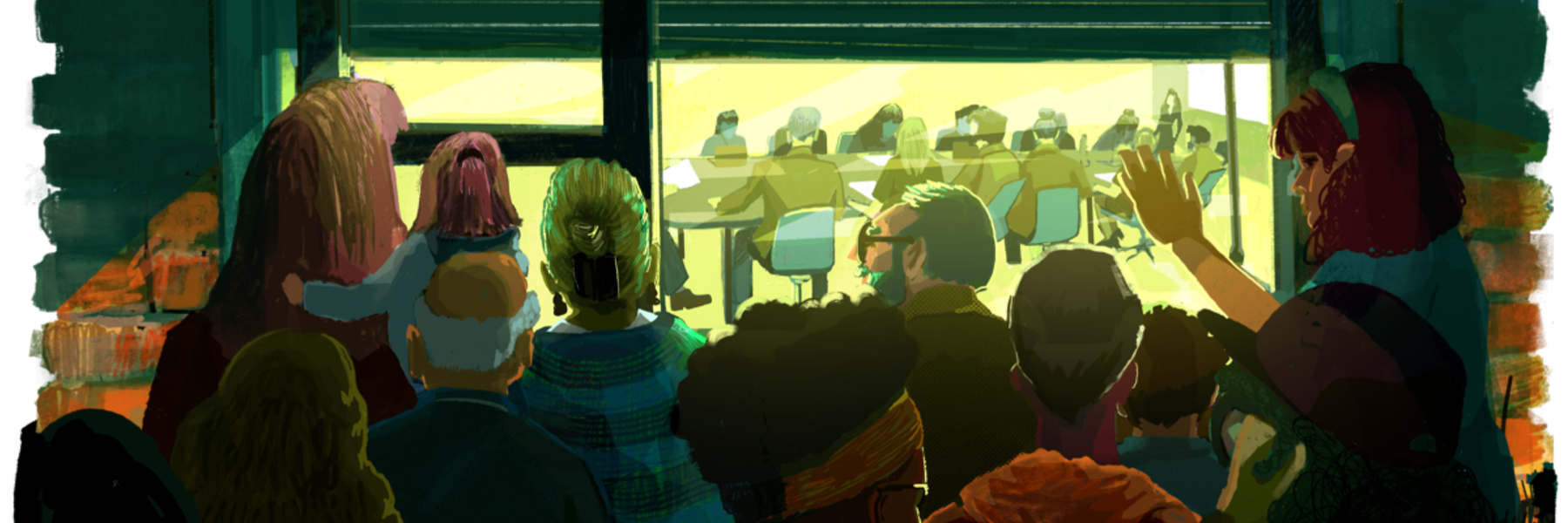A legal loophole has allowed the U.S. Environmental Protection Agency to strike pollution from clean air tallies in more than 70 counties, enabling local regulators to claim the air was cleaner than it really was for more than 21 million Americans.
Regulators have exploited a little-known provision in the Clean Air Act called the “exceptional events rule” to forgive pollution caused by “natural” or “uncontrollable” events – including wildfires – on records used by the EPA for regulatory decisions, a new investigation from The California Newsroom, MuckRock and the Guardian reveals.
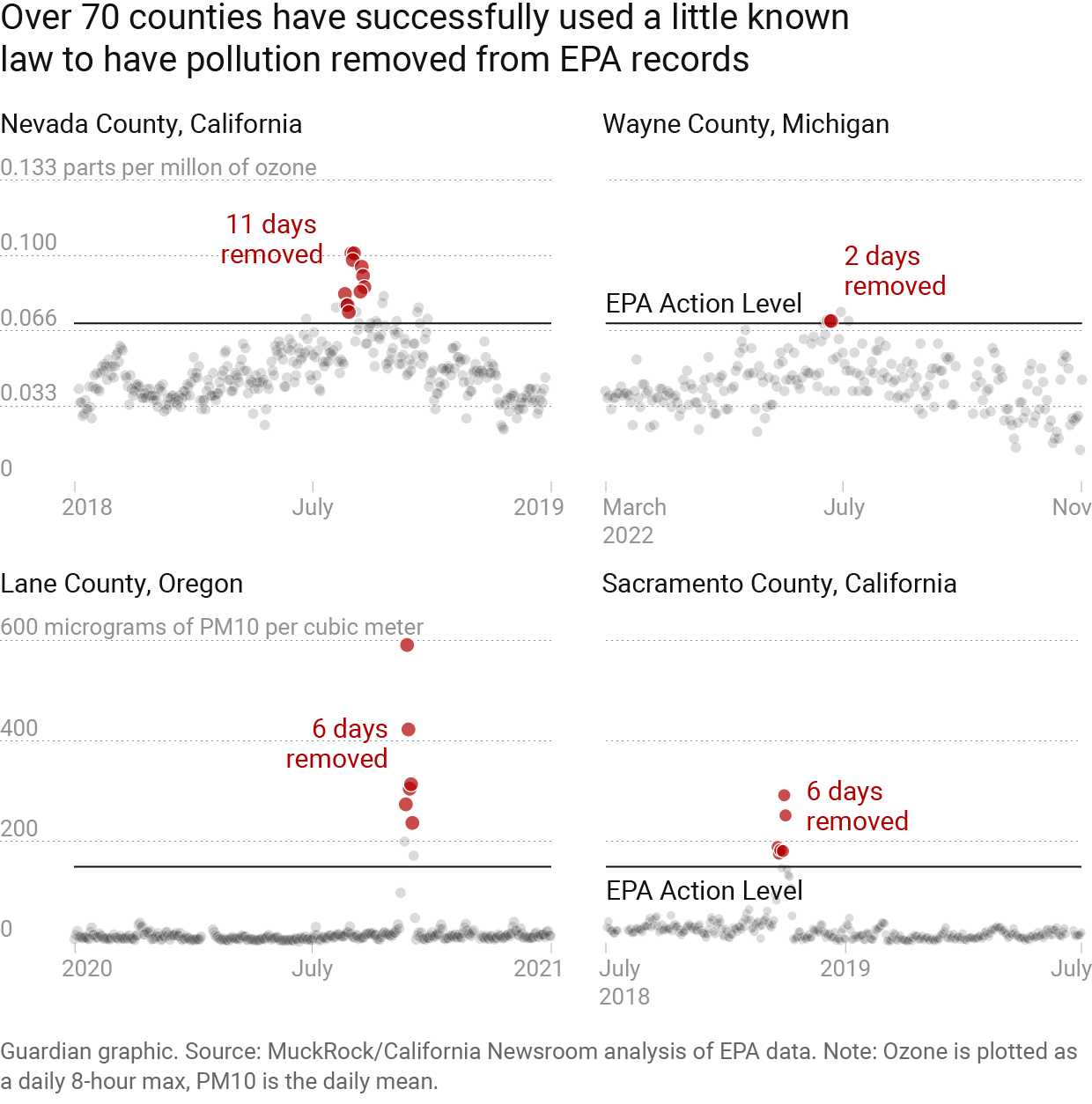
In addition to obscuring the true health risks of pollution and swerving away from tighter control on local polluters, the rule threatens the potency of the Clean Air Act, experts argue, at a time when the climate crisis is posing an unprecedented challenge to the health of millions of Americans.
Where the EPA — the U.S. department monitoring air quality — has agreed to exclude bad air days from analysis, “we may have a sort of stable, relatively rosy picture when it comes to our regulatory world in terms of air-quality trends,” said Vijay Limaye, a climate and health epidemiologist at the Natural Resources Defense Council, a nonprofit advocacy group.
The truth is more complicated, and the air dirtier.
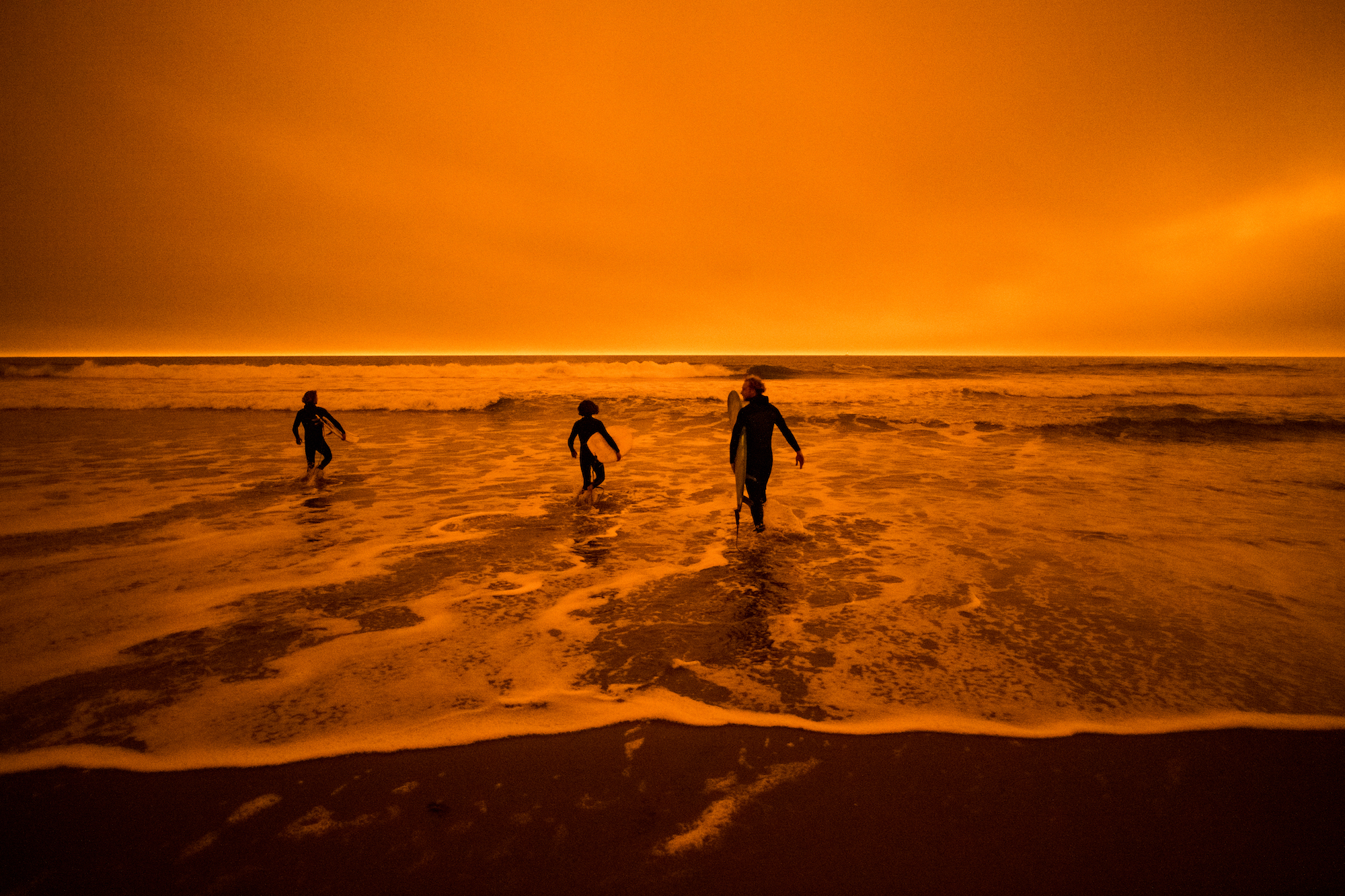
“The true conditions on the ground in terms of the air that people are breathing in, day after day, week after week, year after year, is increasingly an unhealthy situation,” Limaye said.
For the summer of 2023, more than 20 states so far, from Wyoming to Wisconsin to North Carolina, have flagged air-quality readings that were far higher than normal. Most of these days came in June, as skies in the midwest and eastern US were blanketed with Canadian wildfire smoke.
We pored over thousands of pages of regulatory documentation, correspondence and contracts, and analyzed hard-to-find public data to better understand how local regulators make use of the exceptional events rule, as global heating sparks extreme wildfires more often.
We found that, since 2016, when the EPA last revised the guidance on exceptional events:
-
Local regulators in 21 states filed requests with the agency to forgive pollution and, in 20 of those states, had them approved.
-
In total, local regulators made note of almost 700 exceptional events. The EPA agreed to adjust the data on 139 of them.
-
The adjustments came in more than 70 counties across 20 states. The affected areas stretched from the forested Oregon coast to the Ohio Rust Belt, from the craggy Rhode Island coastline down to the bayous of Louisiana.
-
In more than half of the states where exceptional events were forgiven, industry lobbyists and business interests pressed to make that happen, sometimes as the only public voice in the regulatory process. Also, to protect the status quo, some regulators spent millions of taxpayer dollars doing research for and making exceptional events requests, sometimes working hand in hand with industry stakeholders.
Meeting air-quality standards matters a lot to industry and politicians. Violations can add up to stricter, more costly and potentially unpopular pollution controls.
Critics say the growing use of the exceptional events rule for wildfires is of deep concern. “You need to level with the public about the number of days when the air quality was unhealthy,” said Eric Schaeffer, a former regulator who directs the Environmental Integrity Project.
“We have saved more lives in this country because we cleaned up the air than almost any other environmental policy,” said Michael Wara, the director of the climate and energy policy program at Stanford’s Woods Institute for the Environment. “And that’s what’s being undermined.”
“The world has changed,” he said. “We are living in a different world when it comes to wildfire and all of its consequences, including air pollution.”
In response to written questions, the EPA said it takes all air pollution seriously.
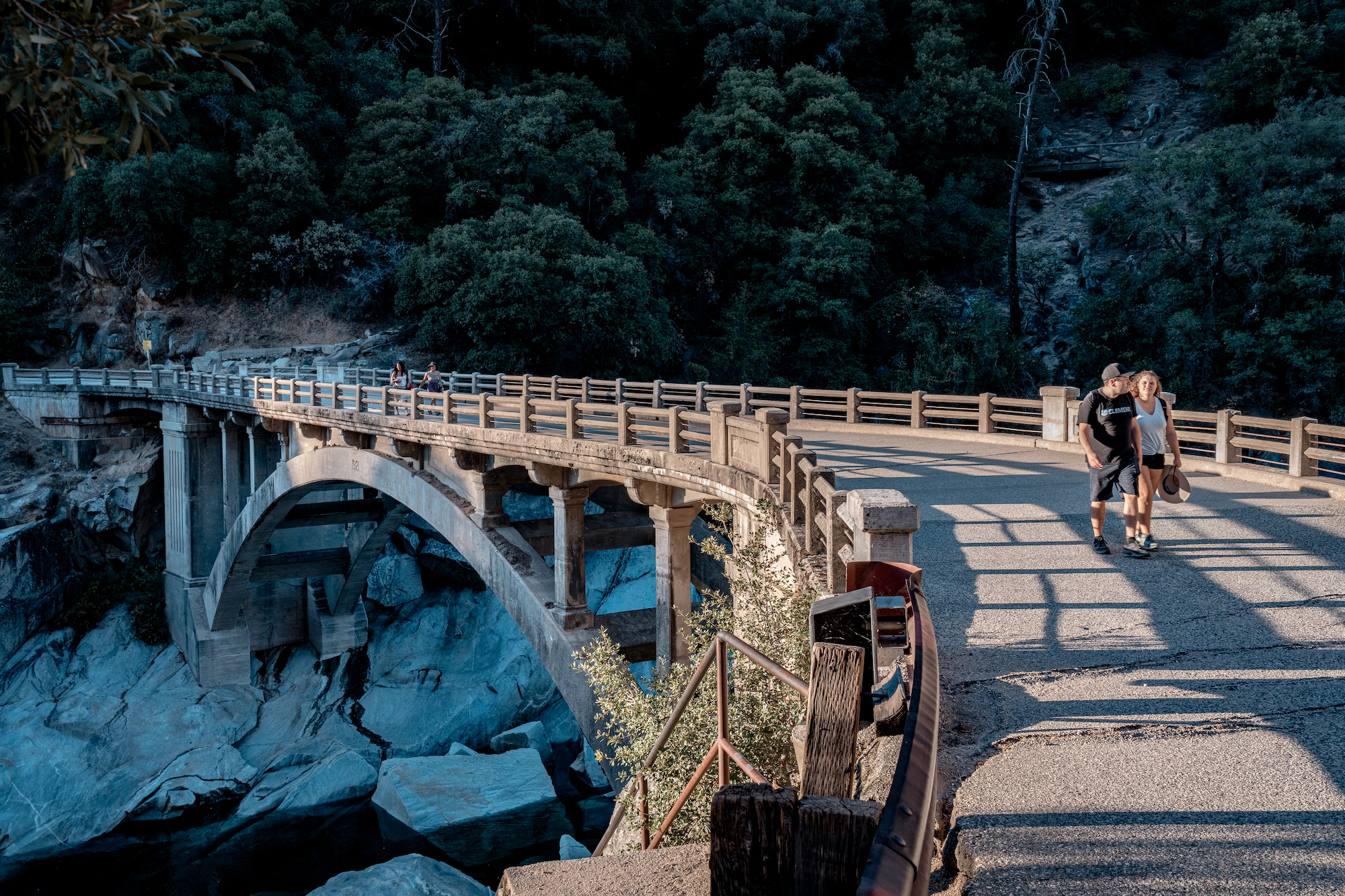
“Wildland fire and smoke pose increasing challenges and human health impacts in communities all around the country,” Khanya Brann, an EPA spokesperson, wrote. “EPA works closely with other federal agencies, state and local health departments, tribal nations, and other partners to provide information, tools, and resources to support communities in preparing for, responding to, and reducing health impacts from wildland fire and smoke.”
The EPA also pointed to “mitigation plans”, in which air districts that have experienced repeated exceptional events must create plans for educating and notifying the public about the pollution risk, as well as “steps to identify, study, and implement mitigating measures” like limiting use of wood-burning stoves and wetting down unpaved roads before dust storms.
More ‘toxic soup’ and more paperwork
In the U.S., clean-air policy long allowed local governments to write off some wildfire smoke on a case-by-case-basis as “unrealistic to control” or “impractical to fully control”. But in 2005, the Republican senator Jim Inhofe of Oklahoma, who has long denied the climate crisis, won a years-long battle to amend the Clean Air Act. The new rule gave local officials more opportunity to exclude pollution from regulatory consideration for an array of events, from fireworks displays and volcanic eruptions to wildfires and even unusual traffic events.
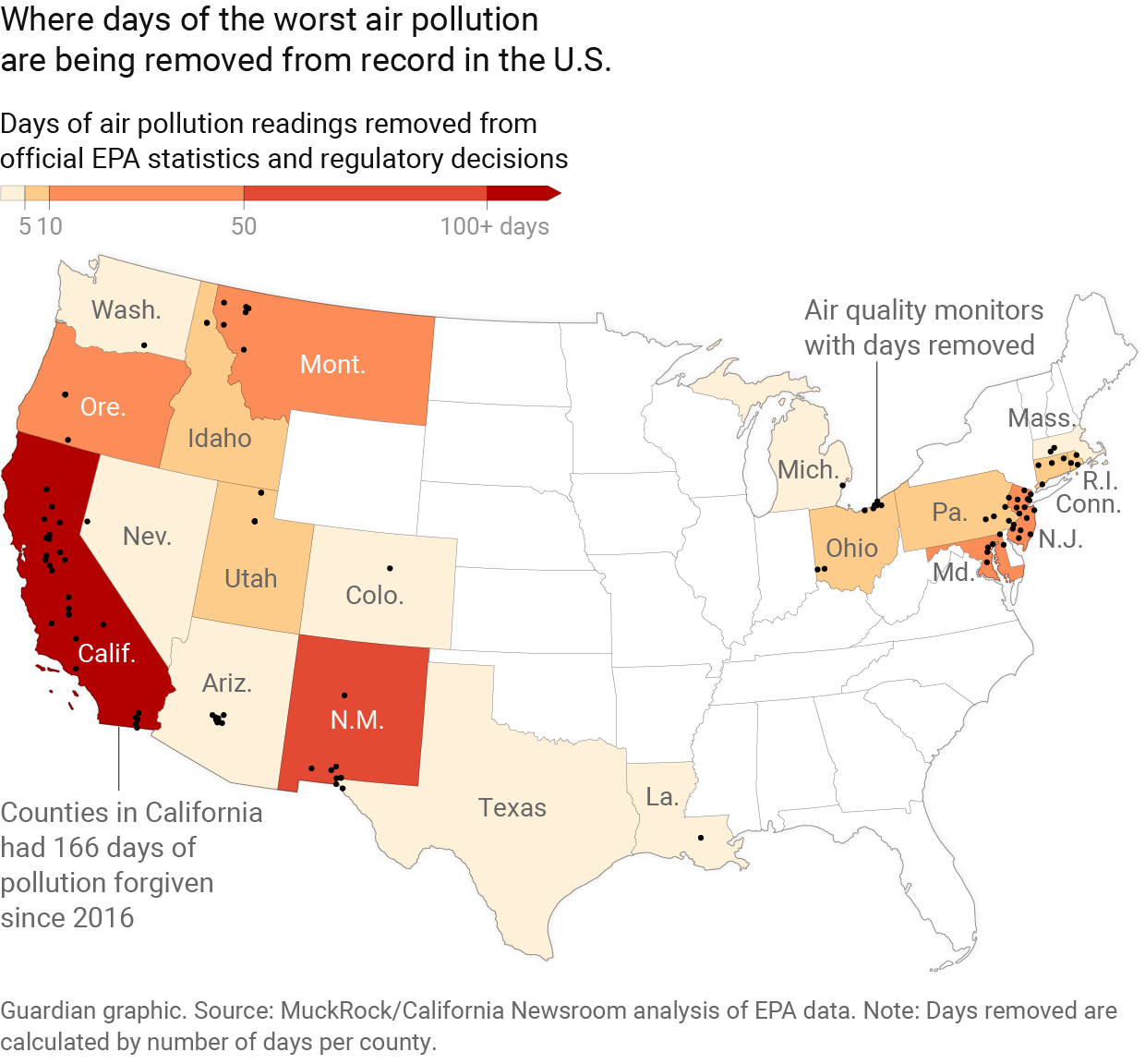
At first, the rule was used most successfully in a handful of south-western communities where high winds created a recurring problem of dust pollution. Over time, local regulators have turned to exceptional events for wildfires more and more often to reach air-quality goals.
Our analysis of local and EPA records found that in 2016, air agencies flagged 19 wildfire events as potential exceptional events. In 2018 and 2021, 52 and 50 wildfire events were flagged. In 2020, 65 were.
“The uptick in exceptional events is absolutely consistent with what we see in the air pollution data,” said Marshall Burke, an associate professor of global environmental policy at the Stanford Doerr School of Sustainability. Smoke is accounting for a higher proportion of overall air pollution, and it’s going up quickly, Burke said — not just in the western U.S., but nationwide.
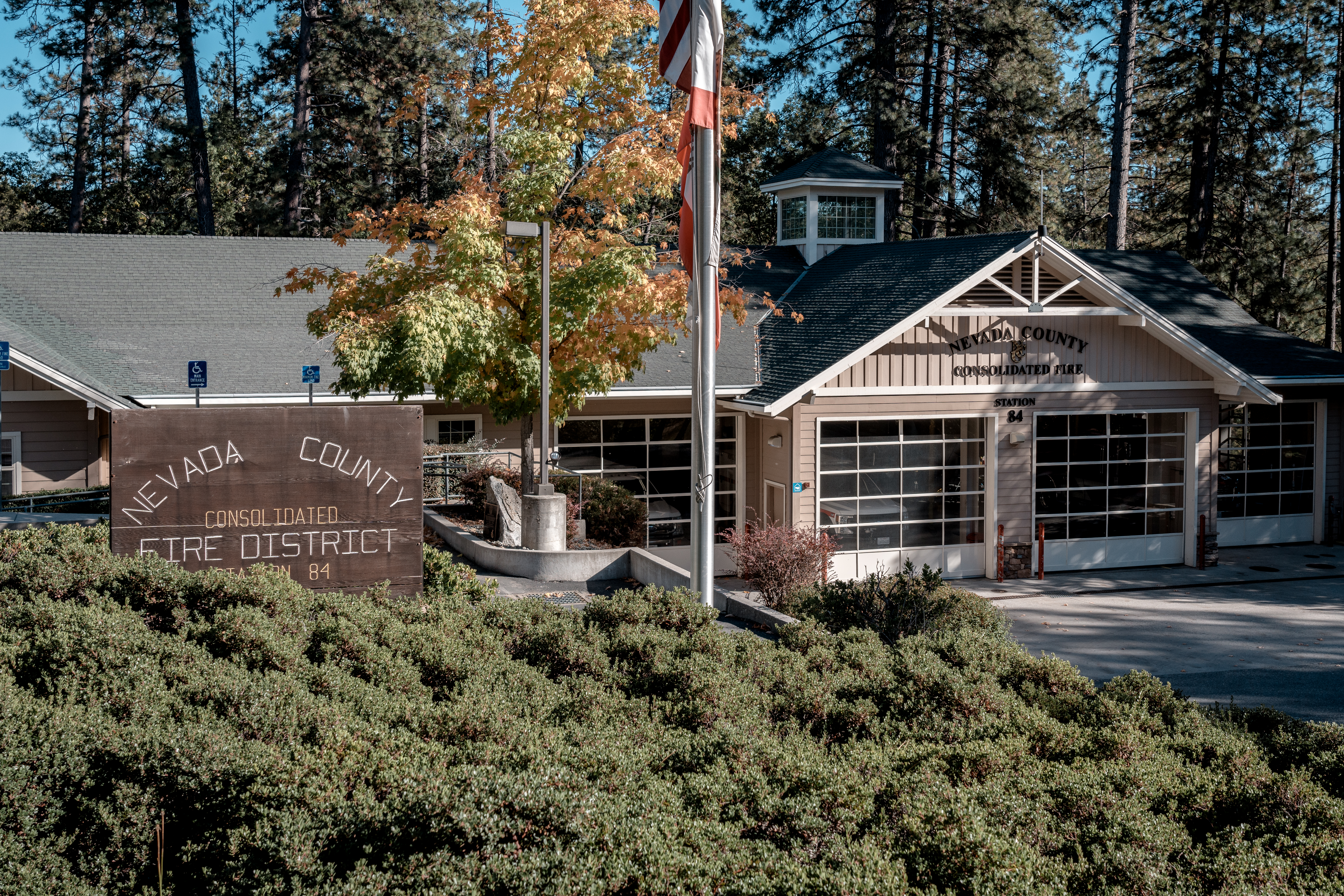
No state is blamed more for smoke pollution than California, followed by Oregon and Canadian provinces, according to our analysis. Western states are more likely to point fingers at each other, while states in the midwest and north-east place the blame on Canadian provinces like Alberta and Saskatchewan.
Wildfire smoke is a dirty and complicated polluter. Limaye, of the NRDC, called it a “toxic soup of air pollution.” It carries soot and ash, regulated as particulate pollution, as well as hydrocarbons and other gases that, cooked in sunlight, help form ground-level ozone. It’s a growing concern for public health, both near the source and thousands of miles away. Smoke, especially from a long-burning fire, can travel long distances and linger at dangerous levels for weeks at a time.
We analyzed data recorded at air monitors nationwide. For every U.S. county, on a day where the EPA excluded any data, we counted that day. Our analysis found that the total number of wildfire-related bad air days erased from regulatory consideration in counties nationwide was nearly double that of bad air days related to high winds: 236 compared to 121.
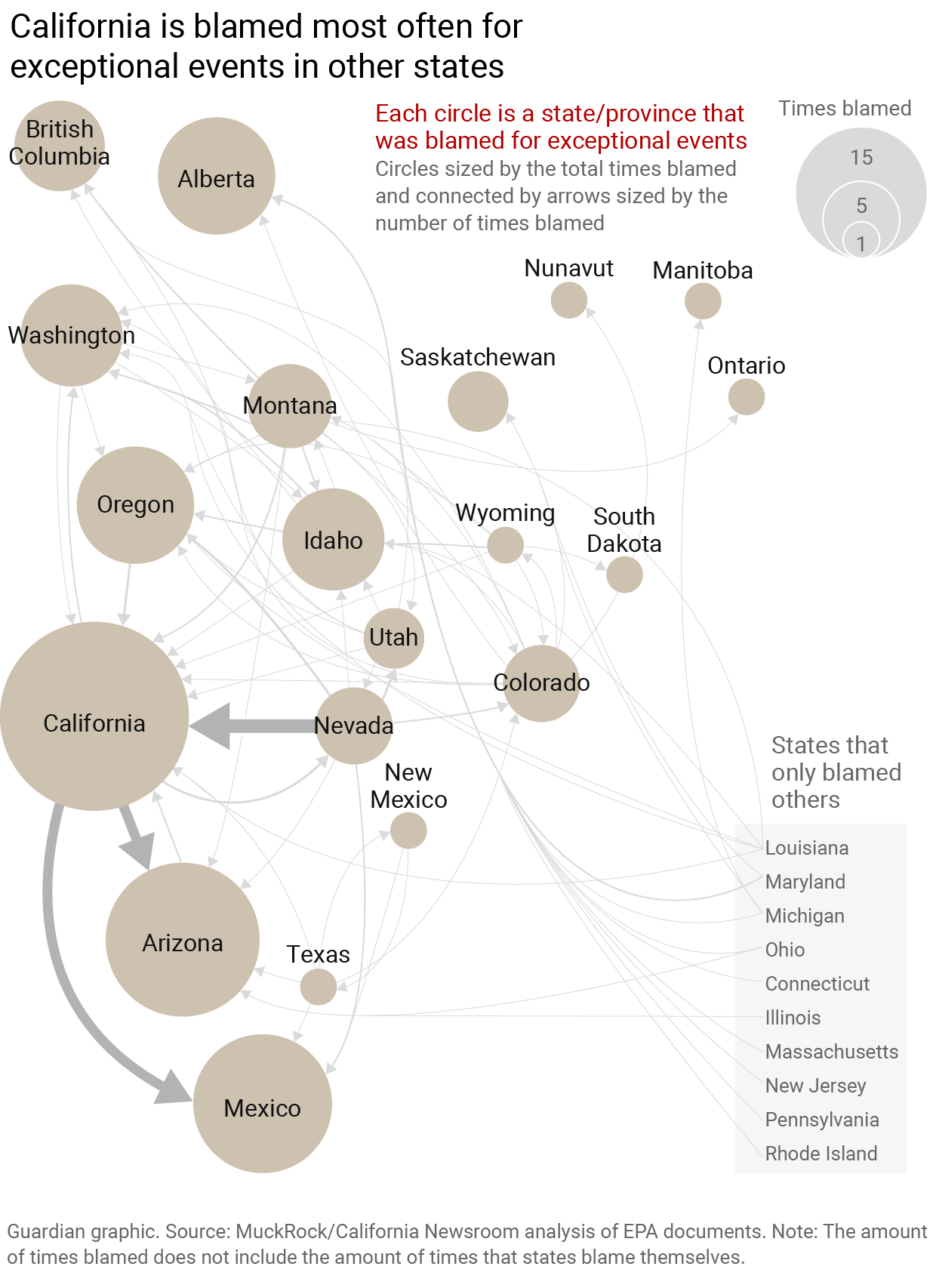
When wildfire caused air pollution, the rule was applied to more monitor readings over multiple days, not just to exclude particulate pollution but also smog or ozone.
“It is a lot of time,” said John Walke, a lawyer for the NRDC.
One or two violations at a single air monitor can flip an area from meeting air standards to missing the mark, according to Walke. Three or four violations over several years can prompt increasingly strict local pollution controls. “So a lot is riding on one, or two, or three violations,” he said.
A smokier future
The recent experience of California’s Nevada County may offer a glimpse of a smokier future. So far, the exceptional events rule has removed 16 days from the record there in the last five years.
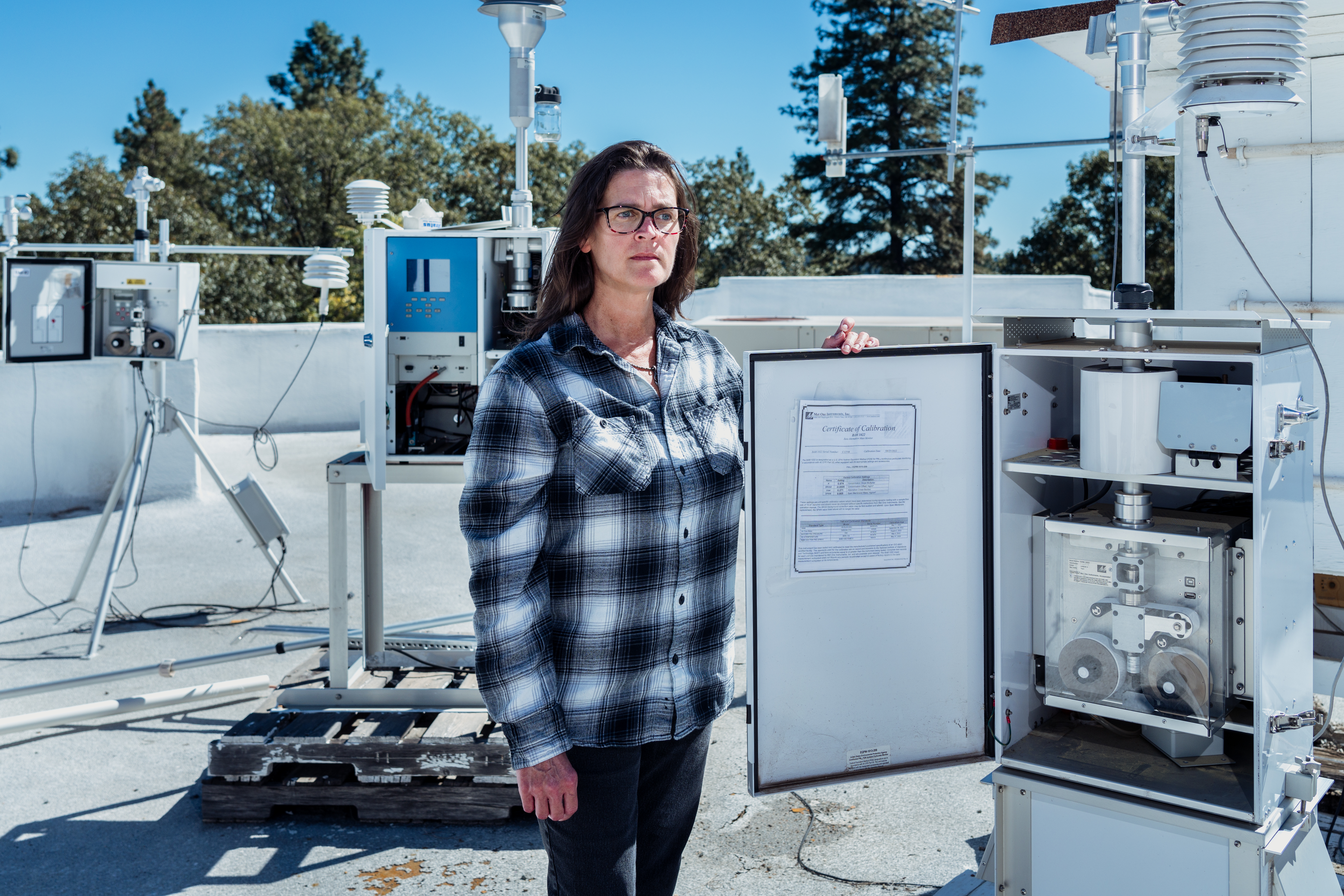
Ozone levels are rising in the background in this foothill community, according to Julie Hunter, the interim chief for the Northern Sierra Air Quality Management District. She said more trucks and warmer temperatures are to blame. More frequently now, she said, wildfire smoke is like a “pancake,” settling flat across the rural valley, stuck until conditions change.
During one fire in 2021, a thick plume of smoke covered the sun in the town of Grass Valley. “We couldn’t see past down the driveway,” said Dr. Alinea Stevens, the medical director at the Chapa-De Indian Health clinic in town.
Stevens remembered doctors and nurses moving among patients under the menacing amber skies, N95 masks snug on their faces to protect against Covid-19 — and wildfire smoke.
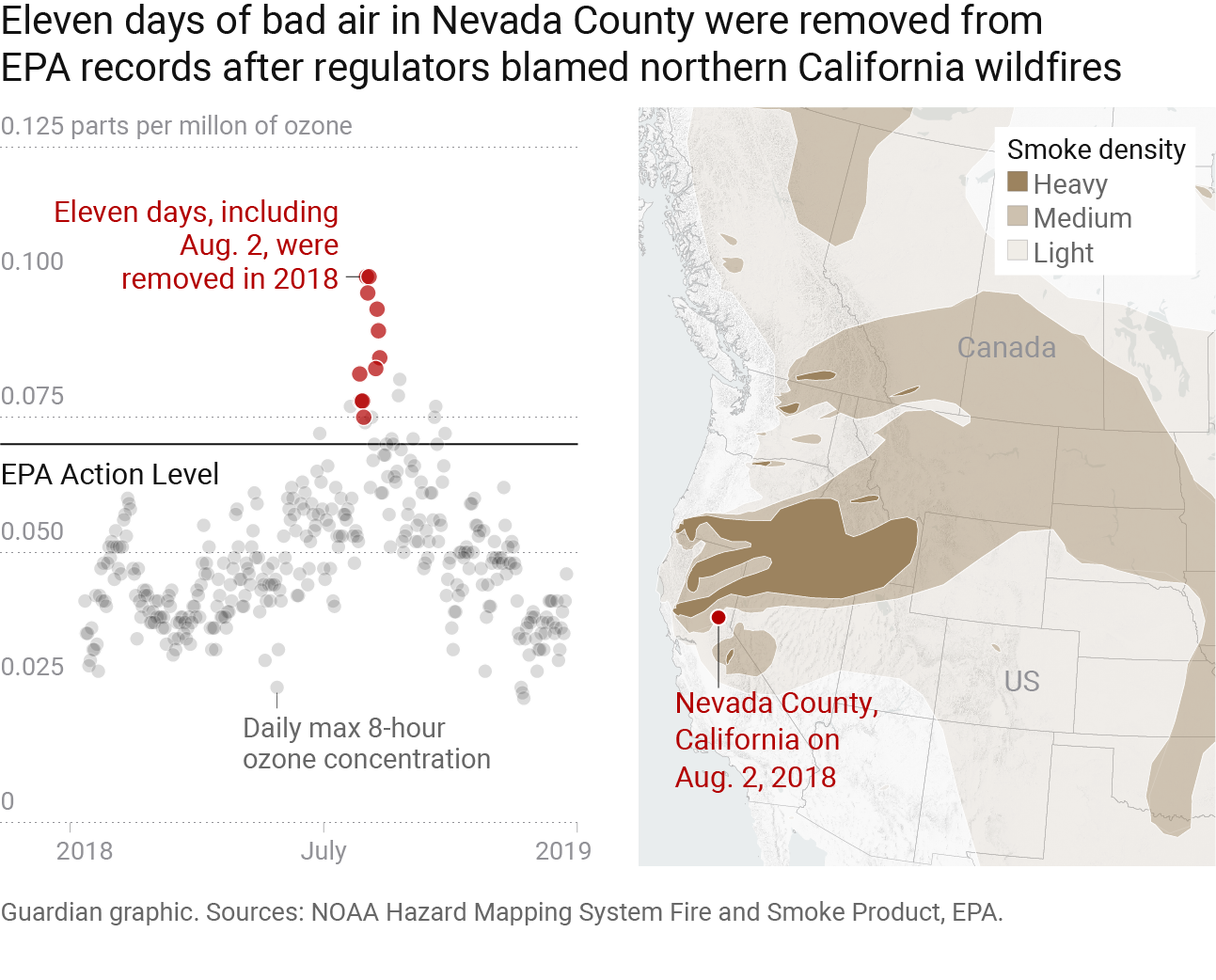
Over hours, the clinic’s security guards got lightheaded and developed headaches. “We told them, you need to wear N95 masks, too,” Stevens said. “That kind of prolonged exposure to those things was very real.”
After fires in 2018 and 2020, the EPA wiped more than two weeks of ozone pollution in the district from the record. That didn’t get Nevada County all the way to a clean bill of health, but local regulators avoided having to tighten rules on local emissions. Hunter, the local regulator, said her district is likely to seek more exceptional events there, including for fires in the last two years.
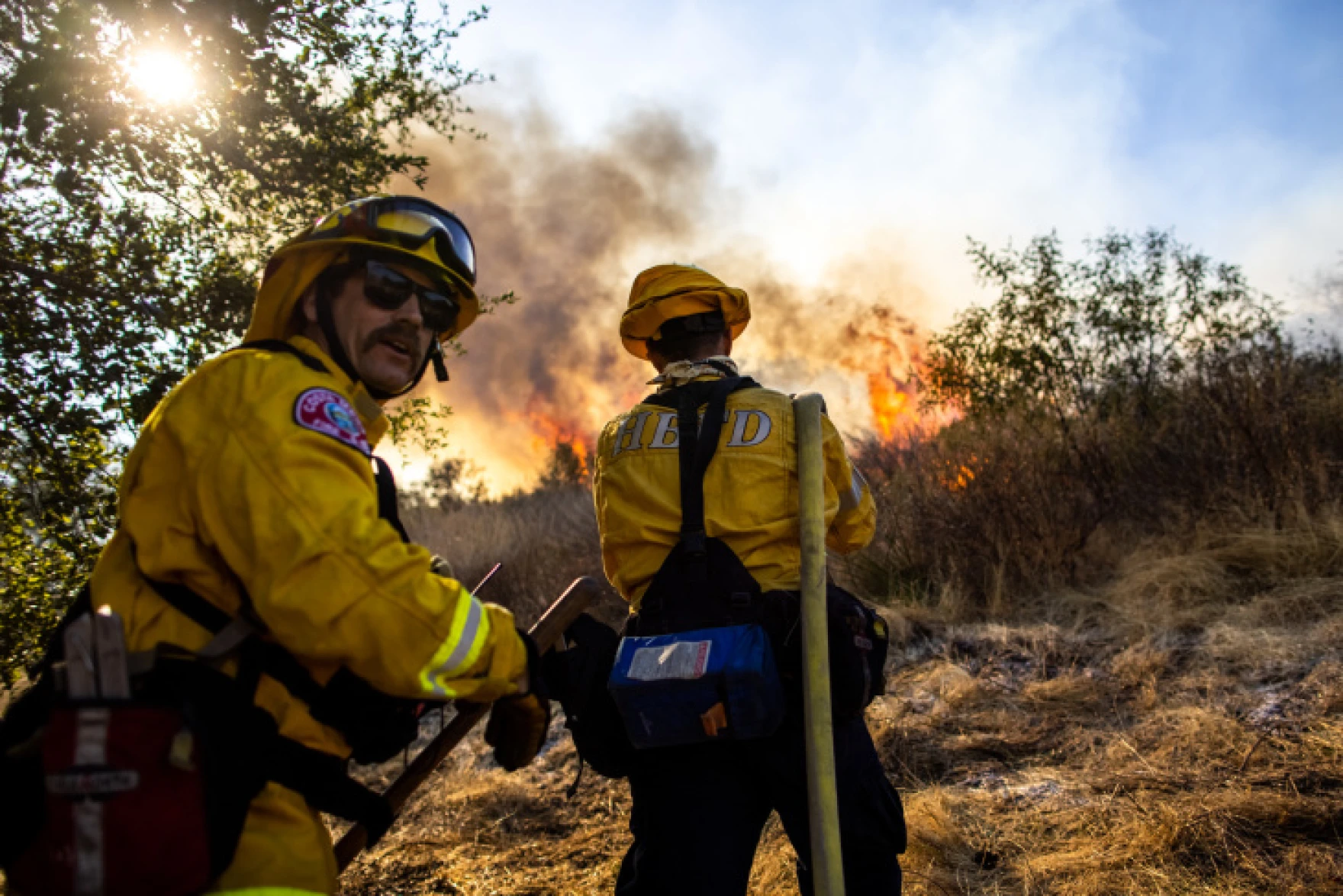
“If we take out wildfire smoke as one of the things that we look at, then we’re not going to be addressing problems that really affect our community here,” said Stevens, who directs the health clinic. The surge of asthma and other health problems from smoke can be overlooked when it happens in a rural community, she said: “I think it’s maybe a way that we don’t put enough attention into fixing something that can be fixed.”
Officials at the California Air Resources Board stress that state law works toward mitigating the effects of climate change, and state policies are supposed to minimize the risk of catastrophic fire.
“We really are trying to pull out all the stops,” Michael Benjamin, the chief of CARB’s air-quality planning and science division, said. Practically, he added: “We and the air districts in California will continue to take advantage of the exceptional events provisions in the Clean Air Act to try to show attainment.”
When it comes to showing attainment, the stakes are high.
Scrubbing smoke from regulatory accounting allows local governments and business to continue as usual, since the practice obscures the toll wildfires take on public health.
It also ignores the ways that the climate crisis is altering how people decide where to live across the U.S.
‘We are all inheriting this’
In 2017, Maitreyi Siruguri and her husband woke in the night to a sky lit unnaturally orange. They left their Santa Rosa home with their young children in the early hours of the morning; the fire that eventually swirled through went on to kill 22 people and destroy more than 5,600 structures.
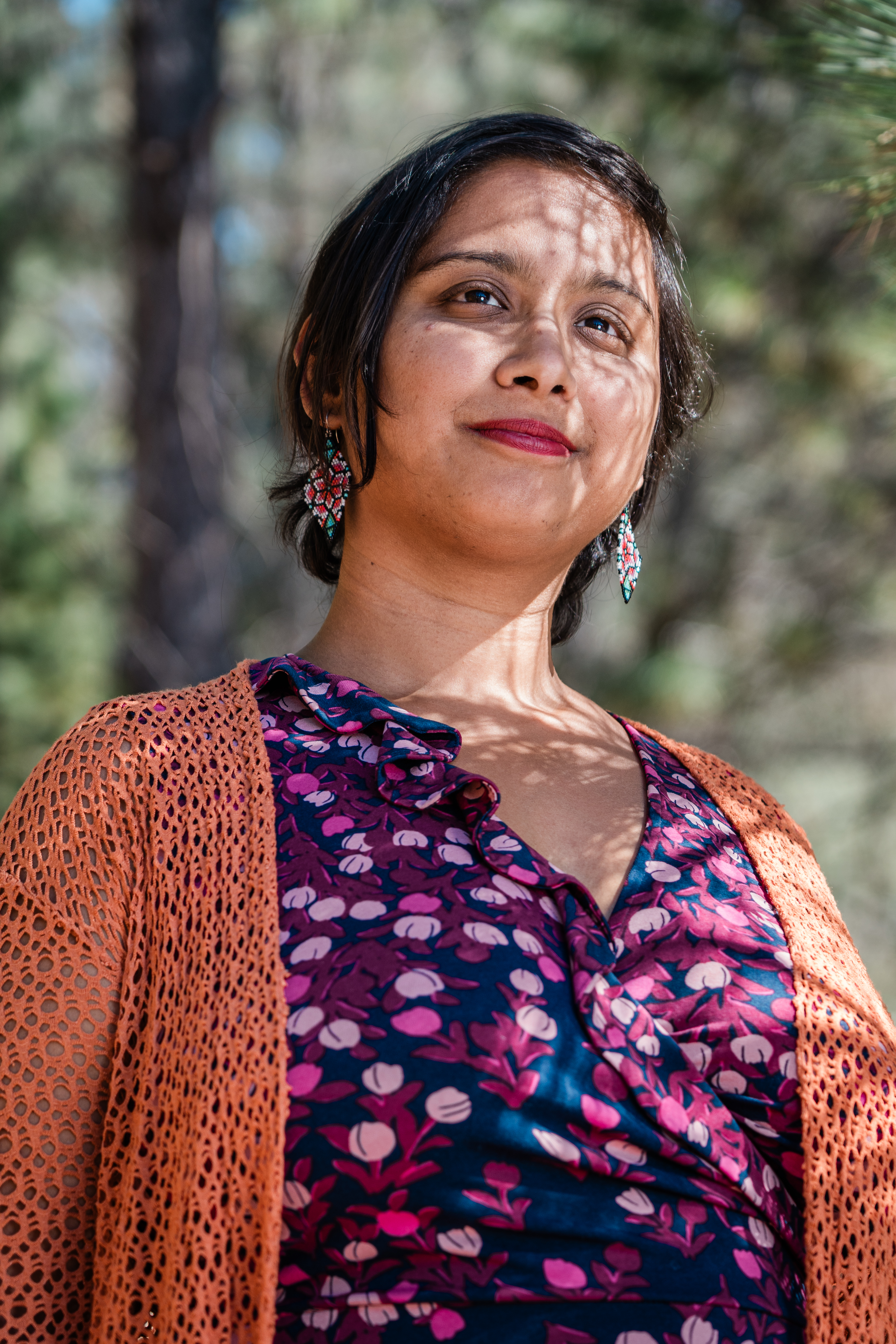
Afterward, “I was starting to sense the emotional drain, from everyone having to go through this,” she said. She searched the internet with worry about how smoke could harm her children, then three and seven years old.
In 2021, they left for the suburbs of Chicago. They could afford to buy a house; the family would be closer to friends and relatives — and further, she hoped, from wildfire and smoke.
Growing up in India in the 1980s and 1990s, and working as a climate educator, Siruguri knows very well that there is no escape hatch leading away from environmental problems. “We are all inheriting this, in every part of the world,” she said.
Wara, of Stanford’s Woods Institute, argues that such an inheritance requires investment. Rather than trying to protect the status quo, he said, governments could make a new cost-benefit analysis.
“It would not be unreasonable” to boost spending significantly to manage public and private lands to minimize smoke, “something like what we think is reasonable when it comes to coal-fired power plants, which is billions of dollars per year”, he said. “Because the harms that are being created by the smoke are large.”
This summer, as air quality worsened across Illinois from Canadian fires, Siruguri worried anew in Naperville. On a late July day, when smoke pollution had returned, she brought her child to soccer camp, and asked the camp’s director whether the air was healthy.
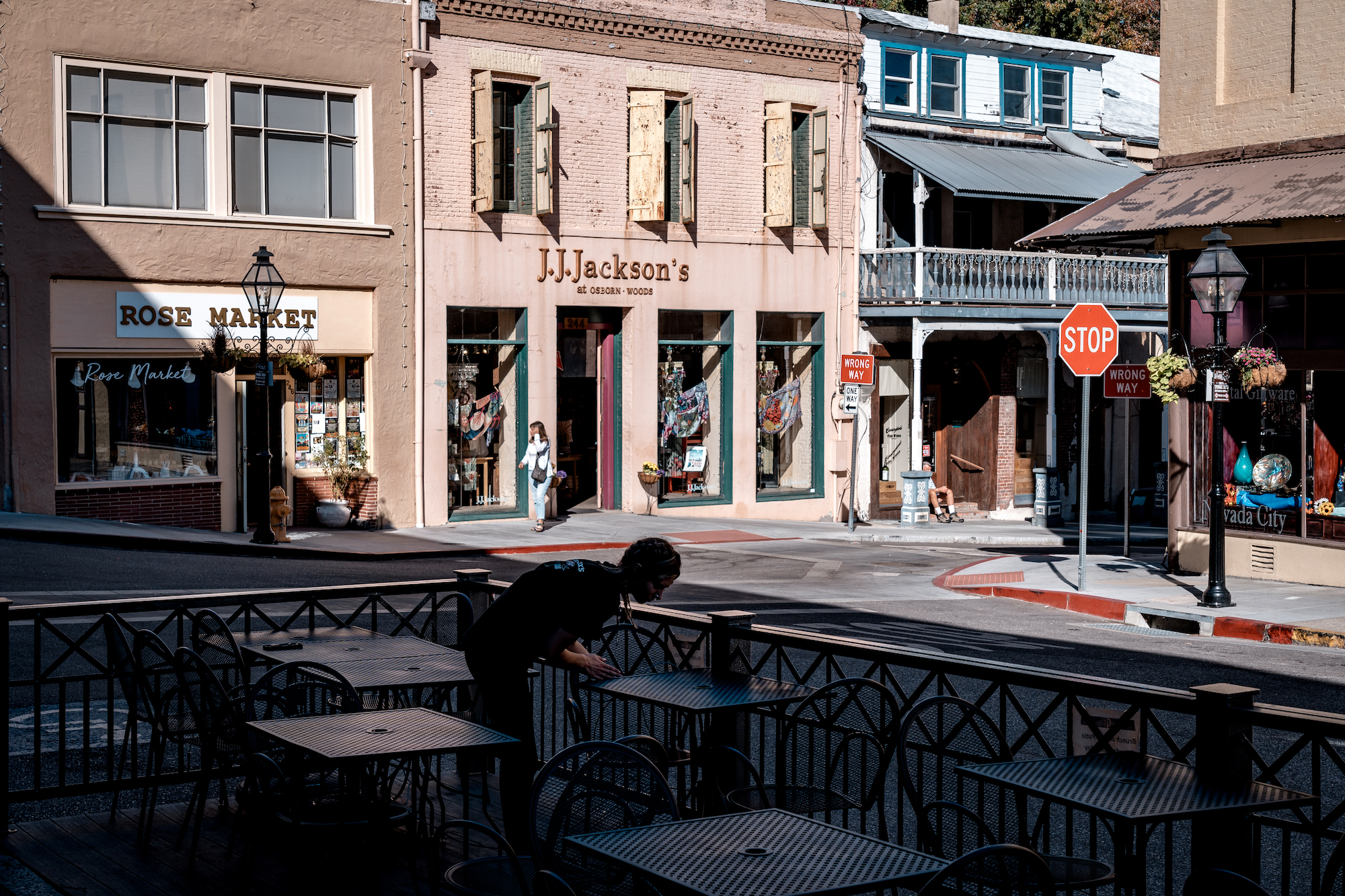
He didn’t have an answer. “He was like, well, we kind of wait till somebody tells us what to do or you make the decision for your child,” she said.
Siruguri believes the government must work to stop climate change, including by switching energy sources away from fossil fuels. She believes that when officials talk to the public, they should be honest about how smoke is changing air over time.
“It’s hard for the general public to know. The next time I see bad air quality, I will be looking for how that’s getting recorded,” Siruguri said. “It is concerning that these decisions are made behind the scenes, almost.”
Walke of the NRDC agreed: “The worst possible outcome is lying to the American people about whether the air they breathe is safe or unsafe.”
Smoke, Screened: The Clean Air Act’s Dirty Secret is a collaboration of The California Newsroom, MuckRock and the Guardian. Molly Peterson is a reporter for The California Newsroom. Dillon Bergin is a data reporter for MuckRock. Emily Zentner is a data reporter for The California Newsroom. Andrew Witherspoon is a data reporter for the Guardian.
